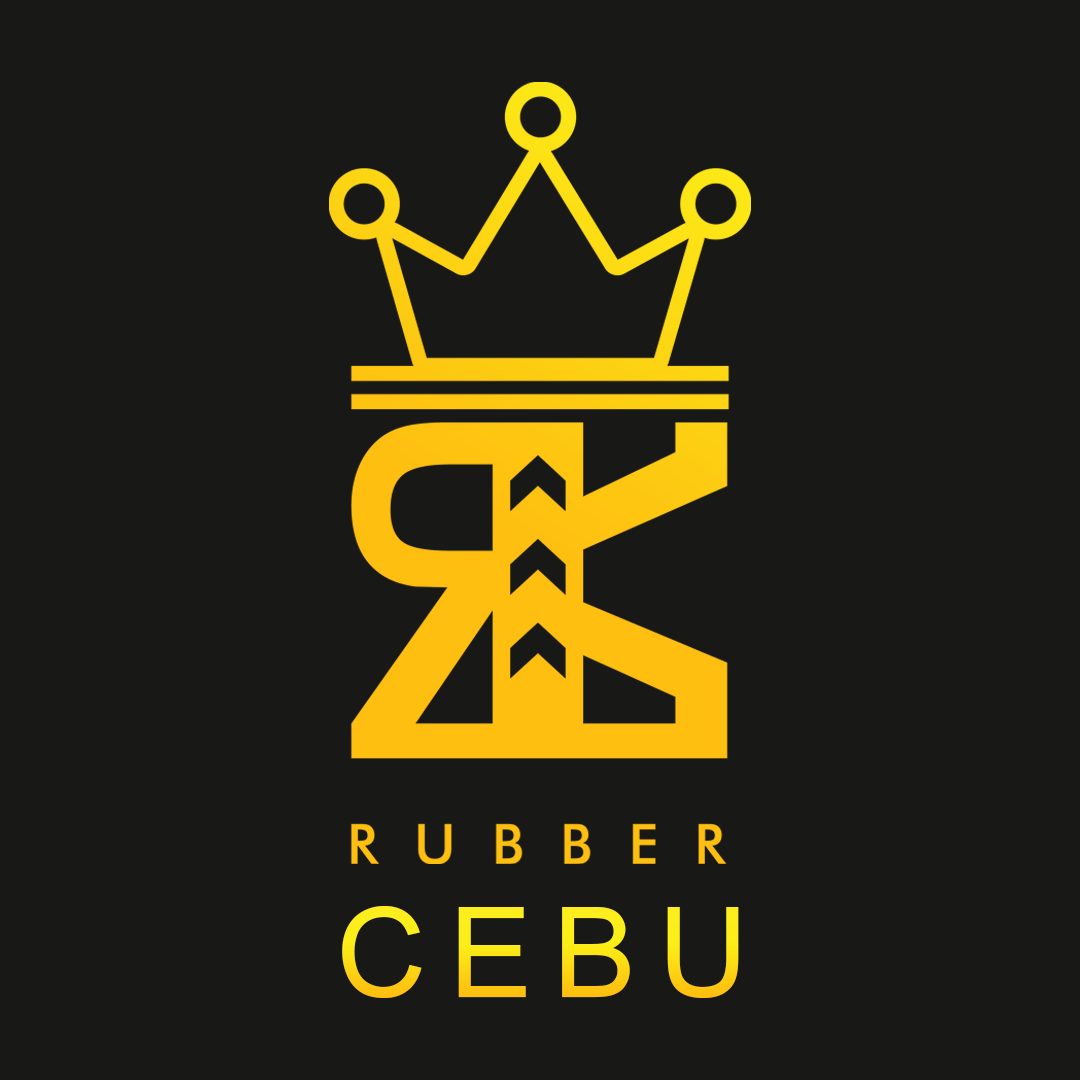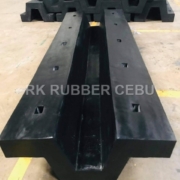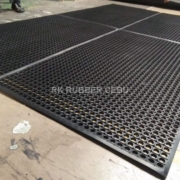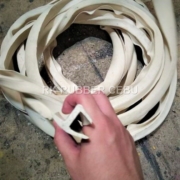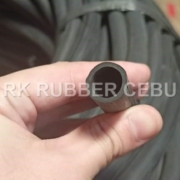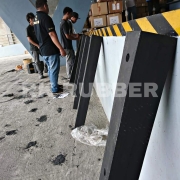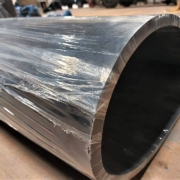Natural rubber, prized for its elasticity and strength, is a top choice for extreme resilience in rubber products. Its unique molecular structure allows for stretching and flexing without permanent distortion, making it ideal for durable and flexible applications. Used widely in industries like automotive, construction, healthcare, and sports, it offers unparalleled impact resistance and shape retention even after prolonged use. With strategic reinforcement methods and precision manufacturing processes, the durability of rubber products can be optimized further. Understanding the properties and applications of natural rubber can lead to innovative solutions across various industries.
Key Points
- Natural rubber exhibits extreme resilience due to its exceptional elasticity and strength.
- It maintains its shape and properties even after prolonged use, bouncing back to its original form.
- Strategic reinforcement methods, like adding reinforcing agents and adjusting curing processes, enhance durability.
- Careful engineering of product structure reduces weak points, improving reliability in industrial settings.
- Utilizing advanced molding techniques and precision manufacturing processes further enhances the resilience of rubber products.
Properties of Natural Rubber
Known for its unique combination of elasticity, strength, and resilience, natural rubber exhibits a range of properties that make it a highly sought-after material in various industries. The elastic properties of natural rubber stem from its molecular structure, which consists of long polymer chains that are able to stretch and flex without permanently deforming. This exceptional elasticity allows natural rubber to return to its original shape after being stretched, making it ideal for applications requiring flexibility and durability.
In terms of environmental impact, natural rubber is derived from the latex of the rubber tree, making it a renewable and biodegradable resource. The cultivation of rubber trees also contributes to carbon sequestration, helping to mitigate climate change. However, the environmental impact of natural rubber production can vary depending on factors such as land use practices, deforestation, and chemical usage. Sustainable practices, such as agroforestry and certification programs, are being implemented to minimize the ecological footprint of natural rubber cultivation. By understanding and optimizing the elastic properties and environmental impact of natural rubber, industries can harness its potential for creating resilient and sustainable rubber products.
Applications in Various Industries
Natural rubber guarantees extensive utilization across a wide array of industries due to its exceptional elasticity, strength, and resilience. Its unique properties make it a sought-after material for various applications, providing customized solutions to meet industry-specific requirements and keeping up with market trends. Below is a table illustrating the diverse applications of natural rubber in different industries:
| Industry | Application |
|---|---|
| Automotive | Tires, hoses, belts |
| Construction | Seals, gaskets, flooring |
| Healthcare | Gloves, tubing, medical equipment |
| Sports and Leisure | Balls, mats, protective gear |
The automotive industry extensively uses natural rubber in tire manufacturing due to its excellent grip and durability. In construction, it is preferred for its water-resistant properties in seals and gaskets. Healthcare relies on natural rubber for its flexibility and resilience in medical equipment. Sports and leisure industries benefit from its shock-absorbing capabilities in various products. The adaptability of natural rubber guarantees that it remains a staple material in these industries, providing innovative solutions to meet evolving market demands.
Advantages of Extreme Resilience
With its exceptional elasticity and strength, natural rubber’s extreme resilience offers a multitude of advantages in various industrial applications. The impact resistance of extreme resilience natural rubber is unparalleled, making it ideal for products that undergo high-stress conditions. This property allows rubber products to withstand sudden shocks and heavy loads without permanent deformation. Additionally, the flexibility and strength of extreme resilience rubber enable it to maintain its shape and properties even after prolonged use, ensuring longevity and reliability in demanding environments.
Extreme resilience natural rubber’s ability to bounce back to its original form after being subjected to pressure or stress is a key advantage in industries where durability is paramount. This characteristic not only enhances the performance of rubber products but also reduces maintenance costs by extending their lifespan. In applications where repeated bending or stretching is common, the flexibility of extreme resilience rubber guarantees consistent performance over time. Overall, the advantages of extreme resilience natural rubber translate to enhanced product durability and reliability in various industrial settings.
Enhancing Durability in Rubber Products
The durability of rubber products can be further enhanced through strategic reinforcement methods that optimize resilience and longevity in demanding operational environments. To improve elasticity and wear resistance, manufacturers can incorporate various techniques during the production process. One method involves the addition of reinforcing agents such as carbon black or silica, which help strengthen the rubber matrix and enhance its ability to withstand wear and tear. Additionally, optimizing the curing process by adjusting temperature and time parameters can greatly improve the material’s durability.
In addition to material enhancements, the design of rubber products plays an important role in enhancing their durability. By carefully engineering the product structure to distribute stress more evenly and reduce weak points, manufacturers can create rubber items that are better equipped to handle harsh conditions. Furthermore, utilizing advanced molding techniques and precision manufacturing processes can further enhance the product’s durability by ensuring consistent quality and performance. Overall, by focusing on improving elasticity and wear resistance through material selection, production techniques, and design optimization, rubber products can achieve exceptional durability in challenging environments.
Frequently Asked Questions
How Does Natural Rubber Compare to Synthetic Rubber in Terms of Resilience?
When comparing natural rubber with synthetic rubber regarding resilience, the key aspects to evaluate are the elasticity comparison and durability assessment. These factors provide insights into the materials’ ability to withstand stress and maintain structural integrity.
Can Extreme Resilience in Rubber Products Affect Their Flexibility?
Extreme resilience in rubber products can enhance impact resistance and durability without compromising flexibility. By balancing elasticity and tensile strength, rubber products can maintain their flexibility while still providing high levels of resilience and durability.
Is There a Limit to the Temperature Range Where Extreme Resilience Is Effective?
The effectiveness of extreme resilience in rubber products can be influenced by temperature limits. Deviations beyond certain thresholds may compromise resilience performance. Understanding these limits is essential for optimizing product functionality and durability in varying environmental conditions.
Are There Any Environmental Considerations When Using Extreme Resilience Rubber Products?
When considering extreme resilience rubber products, it is important to prioritize environmental considerations. Eco-friendly manufacturing techniques and sustainable practices should be at the forefront to minimize the ecological impact of production and disposal processes.
Can Extreme Resilience Rubber Products Be Recycled or Reprocessed for Sustainability?
Recycling options for extreme resilience rubber products are limited due to their complex composition. Reprocessing alternatives involve breaking down the material for reuse in other applications. Sustainability efforts focus on finding innovative methods to repurpose these products effectively.
Conclusion
Natural rubber showcases outstanding properties that make it well-suited for various industries thanks to its exceptional resilience. The utilization of natural rubber in rubber products enhances longevity and performance, rendering it a top choice for applications that necessitate flexibility and resilience. By recognizing the benefits of extreme resilience in natural rubber, manufacturers can develop top-notch products that cater to the requirements of a wide array of industries.
